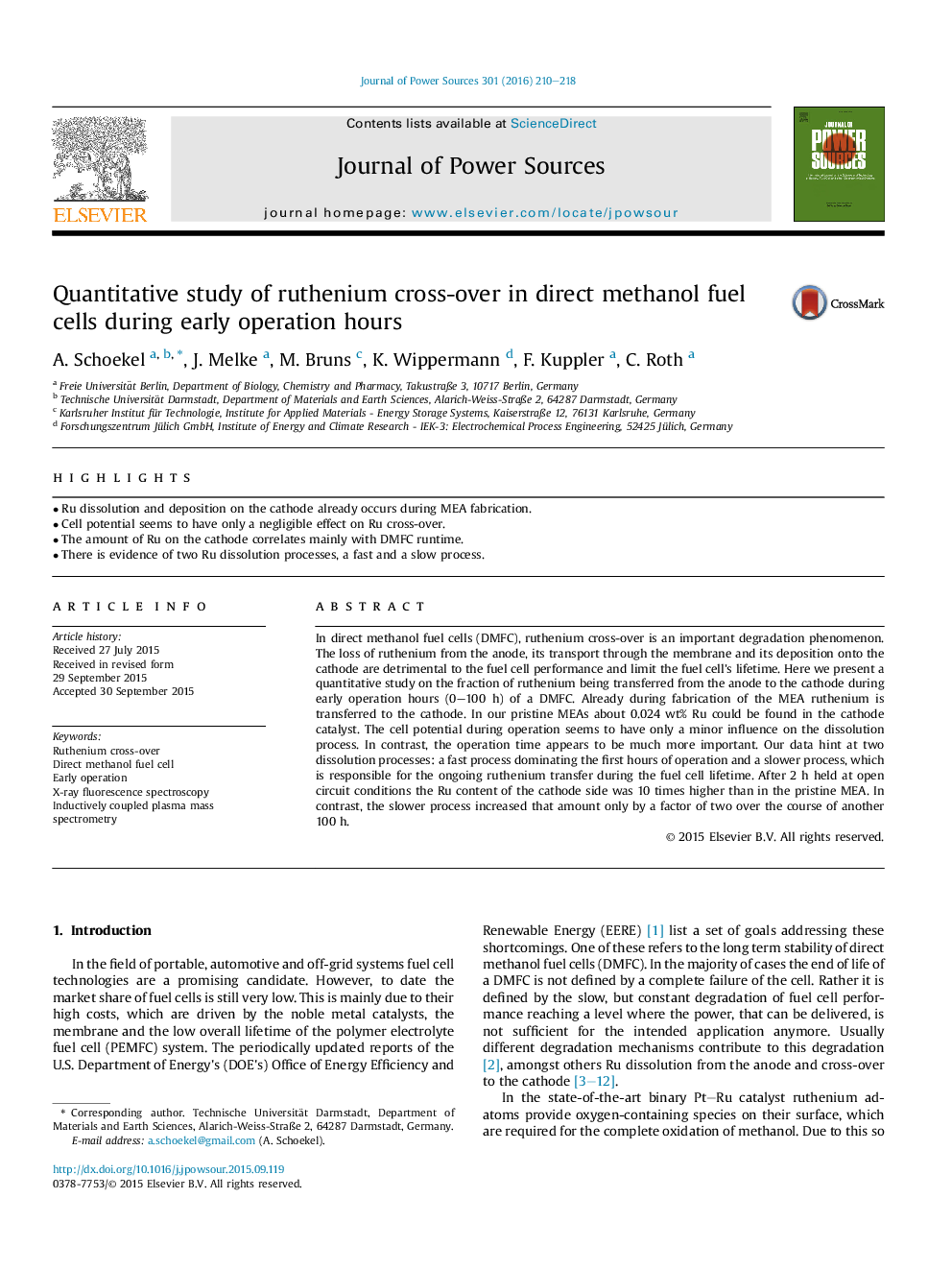| Article ID | Journal | Published Year | Pages | File Type |
|---|---|---|---|---|
| 7729804 | Journal of Power Sources | 2016 | 9 Pages |
Abstract
In direct methanol fuel cells (DMFC), ruthenium cross-over is an important degradation phenomenon. The loss of ruthenium from the anode, its transport through the membrane and its deposition onto the cathode are detrimental to the fuel cell performance and limit the fuel cell's lifetime. Here we present a quantitative study on the fraction of ruthenium being transferred from the anode to the cathode during early operation hours (0-100Â h) of a DMFC. Already during fabrication of the MEA ruthenium is transferred to the cathode. In our pristine MEAs about 0.024Â wt% Ru could be found in the cathode catalyst. The cell potential during operation seems to have only a minor influence on the dissolution process. In contrast, the operation time appears to be much more important. Our data hint at two dissolution processes: a fast process dominating the first hours of operation and a slower process, which is responsible for the ongoing ruthenium transfer during the fuel cell lifetime. After 2Â h held at open circuit conditions the Ru content of the cathode side was 10 times higher than in the pristine MEA. In contrast, the slower process increased that amount only by a factor of two over the course of another 100Â h.
Keywords
Related Topics
Physical Sciences and Engineering
Chemistry
Electrochemistry
Authors
A. Schoekel, J. Melke, M. Bruns, K. Wippermann, F. Kuppler, C. Roth,
